
 |
|
|||||||
| Tech Talk Technical Discussion About The Nissan 240SX and Nissan Z Cars |
 |
|
|
Thread Tools | Display Modes |
|
|
#31 |
|
Post Whore!
 Join Date: Jul 2005
Location: South Florida
Age: 42
Posts: 4,829
Trader Rating: (17)
           Feedback Score: 17 reviews
|
Another example from other thread
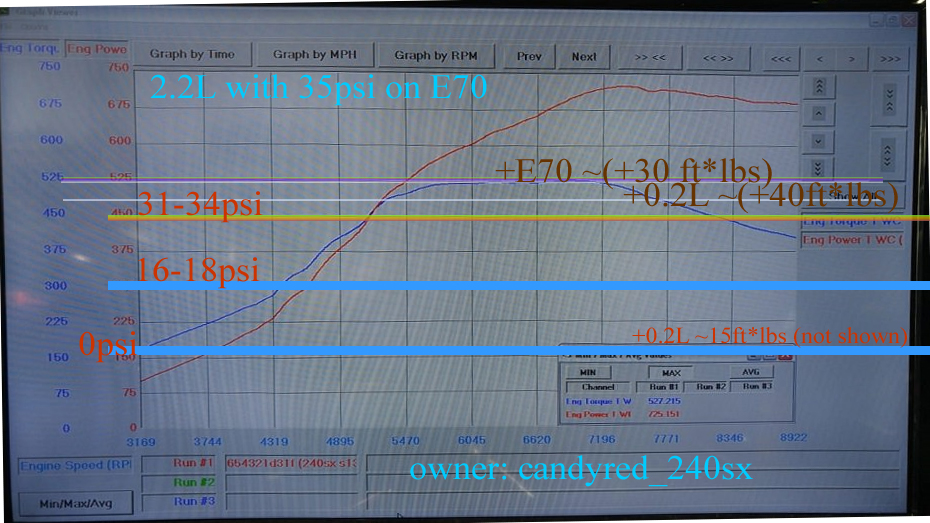 Pretty easy to see torque scale with boost. Just focus on torque because that is cylinder fill, which can only be 100% max. The engine clearly makes a max VE approaching 5500rpm where boost stops rising, max VE = max cylinder fill. Cylinder fill likely stays up after 7k because amazing VE head, but the turbo runs out of flow rate so the air loses density and power levels off. At that point is when we start to consider power and max flow rate and all of that because its the turbo's job to provide the dense air at high flow rates, and if can't keep up with the engines ability to flow then the only thing you can do is install larger turbo if you wanted more power. But max torque isn't going to get better with larger turbos or more head flow than this because adiabatic efficiency of compressors is pretty much standard as long as you are within the specific range the turbo prefers, and head flow rate isn't going to increase cylinder fill beyond 100%. |
|
|

|
| Sponsored Links |
|
|
#32 |
|
Post Whore!
 Join Date: Jul 2005
Location: South Florida
Age: 42
Posts: 4,829
Trader Rating: (17)
           Feedback Score: 17 reviews
|
EVO makes 550ft*lbs, 32-36psi, E85, 2.0L
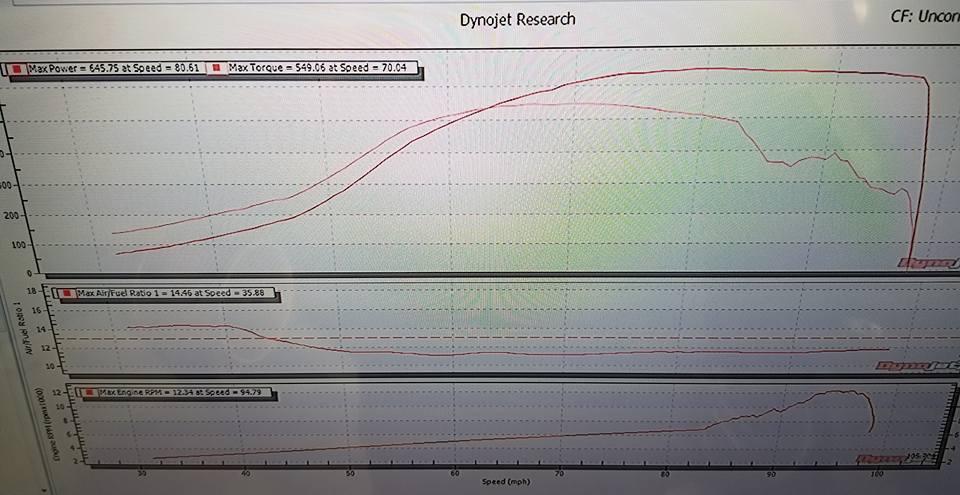 The guy who claims 370ft*lbs of torque at 17psi is also basically saying that an extra 18psi of boost, 0.2L of displacement and E85 is only worth 155ft*lbs of torque When we know E85 plus 0.2L is worth around 50-70ft*lbs in and of itself, is like saying an extra 18psi is only good for 80-90~ ft*lbs of torque (non logical) I looked through the srve thread and there does not seem to be anyone running lower boost pressures to compare with. However it is extremely easy to find N/A Setups which clearly show 100% cylinder fill at 0psi of boost sr20ve 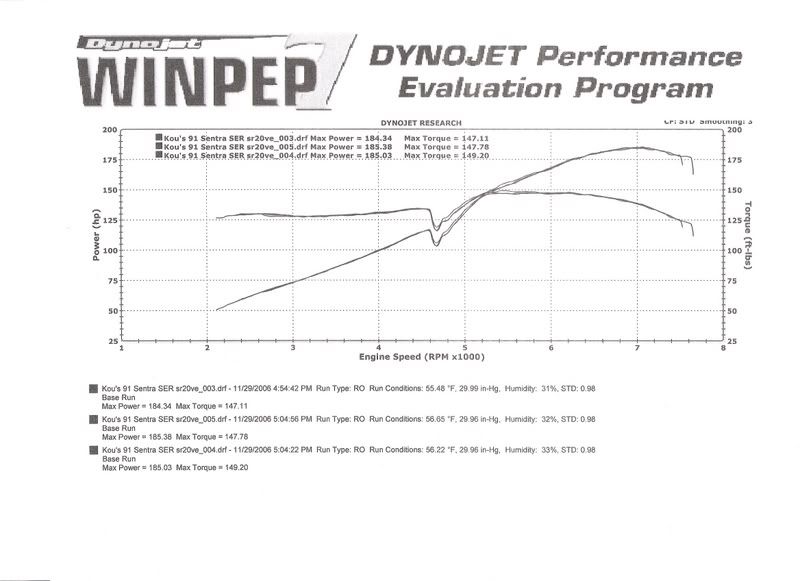 sr20ve 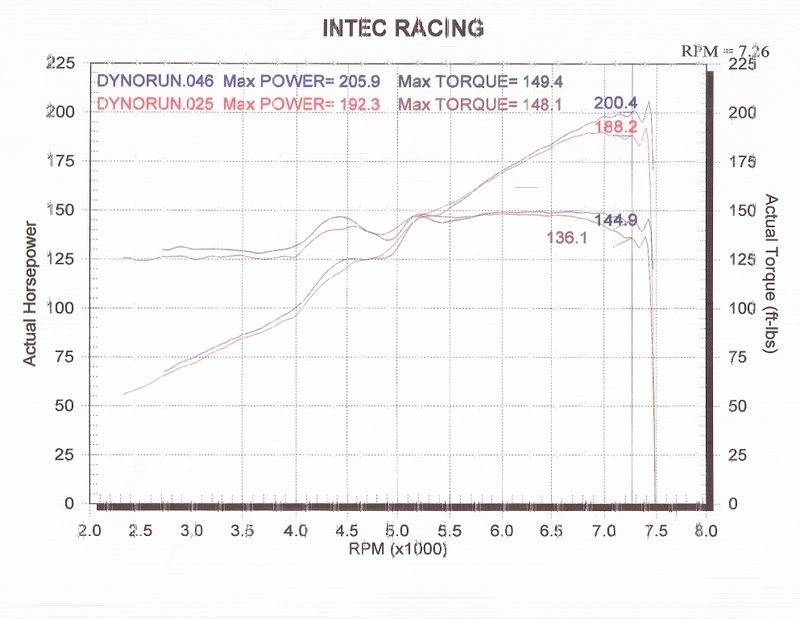 sr20ve  sr20ve 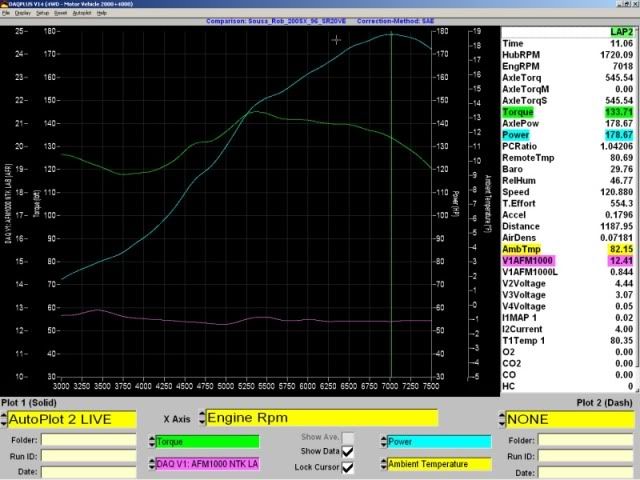 Notice no matter what they all approach 150 ft*lbs at 0psi, approaching 100% cylinder fill with typical gasoline. In calculus, we would call this a"limit". You can approach the limit, and be under the limit. To use this math to your advantage simple multiply in the pressure ratio to find new torque, taking into account any friction, adiabatic efficiency, fuel quality for example: If I wanted to know how much torque at 15psi of boost I could say 15/14.5 = 1.034 + 1atm = 2.034 total pressure ratio 150*2.034 = 305ft*lbs now, lets account for losses such as friction and adiabatic efficiency, say we lost 5% due to non component head losses (pump head loss from airpath friction, intercoolers, etc) and another 1% due to slight temp rise persisting after a non-perfect ambient temperature intercooling and 4% from other sources we can't imagine all of them, exhaust gas pressure pumping loss or something. Realize that there will be some additional losses. It doesn't matter exactly what they are, only that we expect some form of degraded output, it might even be a different percentage at each individual RPM. You can spend alot of time and effort lowering that percentage and improving efficiency, and even the atmosphere from day to day will influence so it isn't always the same number day to day either. Lets figure 10% for our rough calculations next though to keep it simple. 305 * .90 = 274ft*lbs of torque Lets do it for 18psi now 18/14.5 = 1.24 + 1atm = 2.24 150*2.24 = 336ft*lbs minus 10% for losses as above 336 * .9 = 302ft*lbs Remember we are already working with torque at the tires so no need to compute drivetrain losses. Just keep in mind losses maybe higher in RWD platforms by a couple percentage. If we removed the intercooler completely our adiabatic would be only something like 70%, it could be 20% less torque at the same boost when IAT would be much higher going into the engine (it comes out of a compressor 250*F or more at the pressures we are talking) and therefore air density would be lower. This why N/A torque comparisons are so powerful; they give you the torque production limit of a given displacement engine when the intercooler is 100% efficient (no boost, no intercooler) but there may not always be minimal air pathway resistance/friction and different engines have different frictions (some are lighter like Honda). There is typically some air heating as the air moves through the engine bay (so not quite ambient temp) and it could indeed be cooler coming out of an intercooler at ambient temp. Also remember the power lost on the intake stroke is used to draw air into the engine is heavily compensated for in a turbo application because of the kinetic energy of the incoming air stream towards the engine. Last edited by Kingtal0n; 08-23-2018 at 12:52 PM.. |
|
|

|
|
|
#33 |
|
Post Whore!
 Join Date: Jul 2005
Location: South Florida
Age: 42
Posts: 4,829
Trader Rating: (17)
           Feedback Score: 17 reviews
|
And just for good measure
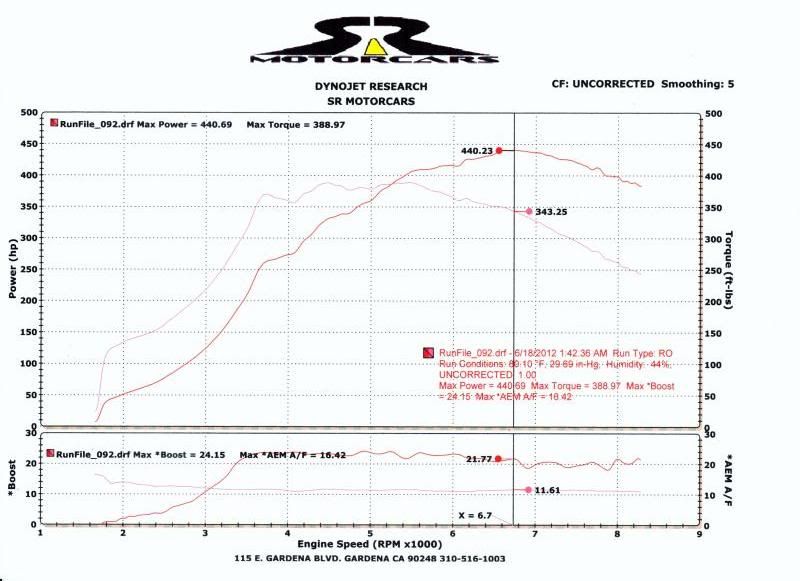 Guess how much boost http://nissanroadracing.com/forum/en...no-e-85-gt2868 breakdown 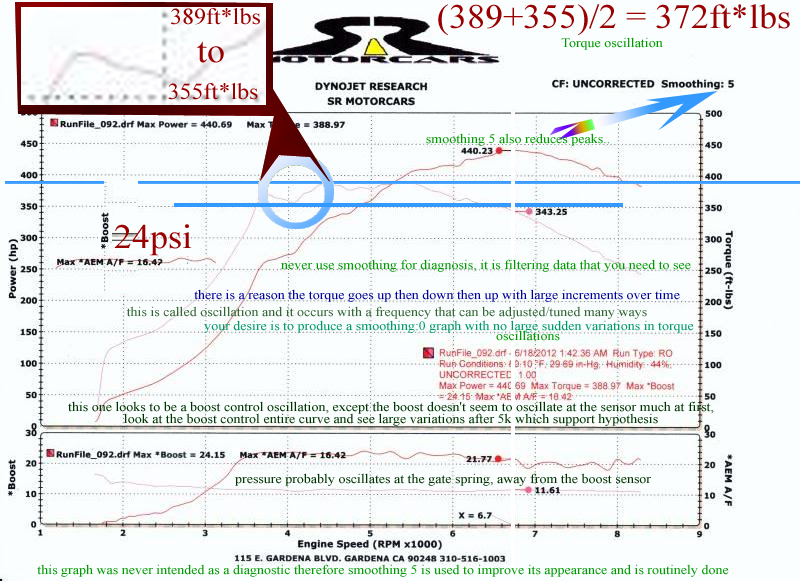 Last edited by Kingtal0n; 08-23-2018 at 12:17 PM.. |
|
|

|
|
|
#34 | |
|
Post Whore!
 |
Quote:
__________________
*My SR20VET* Does your VTC gear rattle in your S14/15 SR? PM me. |
|
|
|

|
|
|
#35 |
|
Leaky Injector
Join Date: Feb 2015
Location: Singapore
Age: 35
Posts: 67
Trader Rating: (0)
 Feedback Score: 0 reviews
|
Hello! Kinda just accepted that the dyno is just a heartbreaker hahaha. Afterall it's a tuning tool and the car drives just fine and pulls hard. I have a friend who's driving an Evo X with some modifications and he's doing 350hp on the same dyno but on another dyno it reads 500. I'll probaby get a meth kit and cams and boost it till 2bar just to see how far I can push it.
Any updates on your car? Your thread is by far my favourite VE build! |
|
|

|
|
|
#36 | |
|
Post Whore!
 |
Quote:
__________________
*My SR20VET* Does your VTC gear rattle in your S14/15 SR? PM me. |
|
|
|

|
|
|
#38 | |
|
Post Whore!
 |
Quote:
__________________
*My SR20VET* Does your VTC gear rattle in your S14/15 SR? PM me. |
|
|
|

|
|
|
#39 | |
|
Post Whore!
 Join Date: Jul 2005
Location: South Florida
Age: 42
Posts: 4,829
Trader Rating: (17)
           Feedback Score: 17 reviews
|
Quote:
Our eyes can't tell the difference between 21 and 23 on a typical gauge at the exact instant the engine hits peak torque on a dyno Also keep in mind that most gauges vary 1-3psi , so unless you have a gauge and a datalog, or two gauge or two datalogs, you don't know what kind of error is in the reading. And there is always error term. And finally the fact that pressure is highest near the compressor and lowest near the cylinder. If you saw 21psi at the intake through a properly sized intercooler that could very well be 26psi at the compressor. So not only is there error in the gauge, there is variance according the measurement location. From looks of the graph I think it peaks 22 to 25psi and falls off to 20psi by redline your original quote was 17psi though iirc and it really fucked this guy up thinking hes going to get 350ft*lbs at 17psi is a joke from any 2.0L With a small turbine It takes 25-28psi to get that kind of torque out of a typical rwd sr20. so first you say 17 and now it became 20, suddenly. And I bet its really 23.5 falling to 20 or something. Just be careful with ur numbers. Its very common or typical for people to make several passes, raising the boost gradually to the point where they no longer even know what the boost curve looks like or how much boost they are running. Even I am guilty of doing that while frazzled on a dyno session with my own vehicle. But when you are finished with all that, looking at the graph, don't go online and make up a boost number just because you don't have a recording of what it really was, that guess will get people's feeling hurt when they copy your setup and it only makes a fraction. Better just to say you aren't sure than use 17psi as a go-to guess. |
|
|
|

|
|
|
#40 |
|
Post Whore!
 |
lol at the fact that you think jr is running analog gauges. What is this, 1926??
He is on a Haltech with proper data acquisition so I am pretty sure the numbers are accurate. I am going to harp; the VE allows one to run very low boost numbers to achieve staggering results on pump......akin to the Honda boys. The head flow, it's ability to resist knock (which is all in the head design) and the different coolant jackets to the standard VE head, all contribute to a heat that is much less knock prone than any DE head and allows you to get away with alot on pump. King, please lay off the blanket statements..... |
|
|

|
|
|
#41 | |
|
Post Whore!
 Join Date: Jul 2005
Location: South Florida
Age: 42
Posts: 4,829
Trader Rating: (17)
           Feedback Score: 17 reviews
|
Quote:
We had this discussion already. There is nothing you can do to the head of a 2L engine to make it produce more torque other than raise compression ratio. I can make that blanket statement because it is true. That is a fact across all platforms, all 2L engine in the world must abide by physics. 1982 - 2020 it hasn't changed much. DI improved things a little but we aren't going there. Boost adds roughly 10ft*lbs per psi (gasoline; w/ ambient Intake air temp), regardless of what the head flows or what kind of 2L engine we are talking about, near peak torque/BSFC. The fact he reported 17, and now suddenly 20, is highly suspect of 'guessing' and no actual data logs or reports to go from. And even then it is impossible to say whether the sensor is accurately calibrated without a second sensor. Or where the pressure data is being taken from, compared to other locations. Last edited by Kingtal0n; 06-11-2020 at 03:24 PM.. Reason: added "gasoline & ambient IAT" to be specific |
|
|
|

|
|
|
#42 | |
|
Post Whore!
 |
Quote:
My boost gauges (Haltech and Defi) tee off the same vac line and are within 1psi of each other, in-fact, my Defi reads slightly higher than the computer. It doesn?t matter what pressure comes out of my turbo, what matters is what is being ingested by the motor. All that data provides is how efficient your intercooler is. There is and will always be a pressure drop across them. Your argument is invalid here. You can sit here and throw all your mathematical figures at it and still come to the same conclusion, you?re wrong. If you have no experience with a VE head, perhaps you should get some. At the end of the day, I?m not going to post a data log for you, to legitimize myself, for your satisfaction. You can take my word for it or don?t. Personally, I don?t care what you do.
__________________
*My SR20VET* Does your VTC gear rattle in your S14/15 SR? PM me. |
|
|
|

|
|
|
#43 |
|
Post Whore!
 Join Date: Jul 2005
Location: South Florida
Age: 42
Posts: 4,829
Trader Rating: (17)
           Feedback Score: 17 reviews
|
never said it was impossible just to be careful with numbers. I thought the thread op said your graph was at 17psi thats where I got it from.
For an sr20 engine to make an extra 50-70 ft*lbs of torque (360 instead of 300 at 19psi) there are many things you could or would have to do. Working backwards that is like a 4L engine making 5.3L engine torque (360ft*lbs). It doesn't add up. Something is wrong, where did the extra 1.3L come from? You can put aftermarket heads, cam, intake, exhaust, all the mods you want and it will never make more torque than the same 100% peak because you can't go over 100%. Maybe you bored and stroked the engine to 2.4L and just forgot. Or had a 50 shot of nitrous on it. Honda makes the most efficient engines on the planet, lets see what their 2L does at 19psi... With E85 https://www.maperformance.com/blogs/...2k-on-our-dyno  wow look at the Honda go This is 1.8L AND E85 , you can clearly see the resemblance to all the others (torque) https://honda-tech.com/forums/forced...-tune-2820252/  Its missing .2L so add 10% torque to what you see to compare with 2L I'll keep looking though heres 2.4L KA24DET 13psi of boost http://www.ka-t.org/forums/viewtopic.php?t=45339  Intersting. Creeping on 320ft*lbs with .4 extra liters but 6psi less boost. Lets work backwards to see if it makes sense with what we already know Go from 2.4L to 2L so subtract 20% torque: (320 * .8) = 256ft*lbs, now lets add the boost: for every 1psi we add roughly 10ft*lbs so lets count it out, 13 -> 19psi = 6 psi so +60ft*lbs to 256ft*lbs = 310ft*lbs of torque from 19psi at 2L !! Imagine that Isn't it funny how no matter what engine we look at from what car, around the world Last edited by Kingtal0n; 06-11-2020 at 10:23 PM.. |
|
|

|
|
|
#44 | |
|
Post Whore!
 |
Quote:
I hear what you?re saying, but I have nothing to gain by lying about what my car made/makes. Oh, this was on P11 cams as well, the worst cams for the VET setup. Remember, VE on this motor is far different than the DET. Have you seen what a factory VE head flows without modification? If I recall correctly, my intake CFMs were 273 and the exhaust was 196.
__________________
*My SR20VET* Does your VTC gear rattle in your S14/15 SR? PM me. |
|
|
|

|
|
|
#45 |
|
Post Whore!
 Join Date: Jul 2005
Location: South Florida
Age: 42
Posts: 4,829
Trader Rating: (17)
           Feedback Score: 17 reviews
|
2.4L at 18psi:
http://www.ka-t.org/forums/viewtopic.php?t=38282 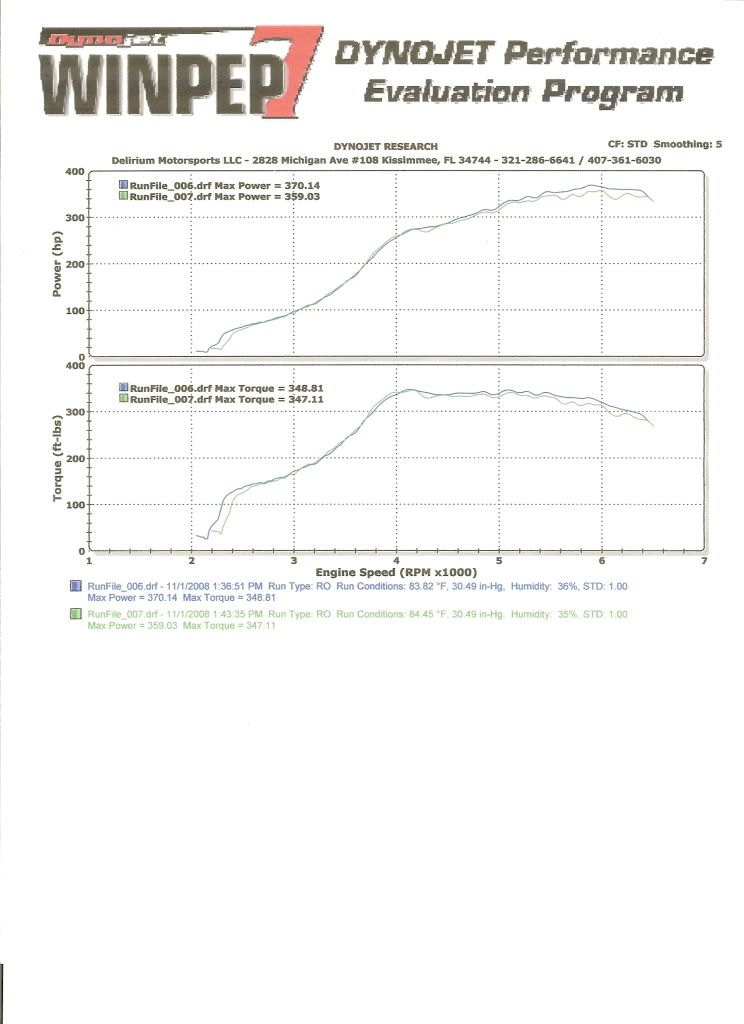 So your 2L makes 2.4L torque? Where did the 0.4L come from? magic? cams, exhaust, intake, makes no difference. Displacement is, there is no replacement. It doesn't match what is typical, is all 2L at 18psi again, volkswagon this time https://www.getunitronic.com/ecu-tun...012-stage1plus 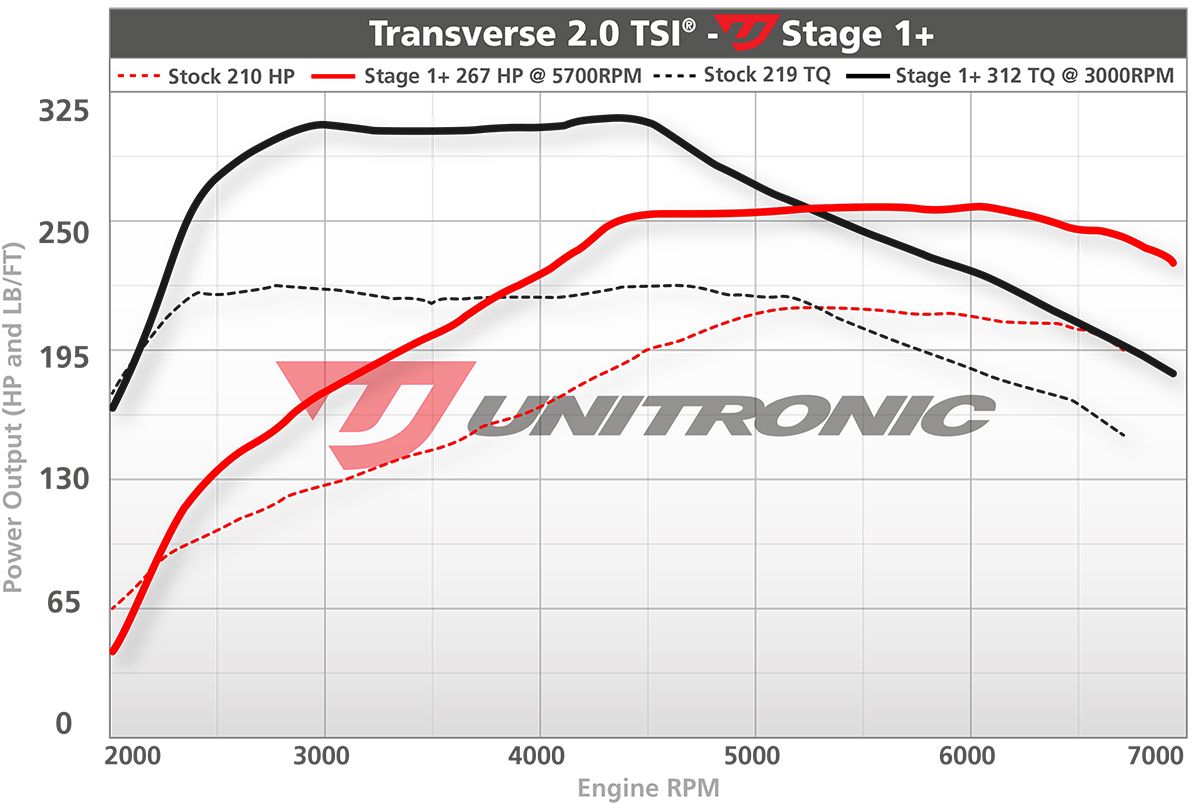 Oh look 325ft*lbs and its not even a dynojet. Think about that for a minute. They clearly fudged the numbers up a little to sell their product, and its higher than any other 2L i've ever seen because its NOT a dynojet and was fucked with, and STILL its 30ft*lbs less than what you are suggesting a 2L will make! Mitsubishi, gasoline, 2L https://www.evolutionm.net/forums/ev...93-octane.html  355ft*lbs of torque... at 27psi of boost! ur telling me you make what a 2.4L engine makes, that sr20VE makes what a 4g64 makes at 27psi, with just 19psi... it makes the 4g63 engine look like garbage! When we all know 4g63 is king. Or so I heard Can it be that good? to beat every other engine ever made? Realistically I hope so because I will use it immediately. Can anybody find more graphs? Last edited by Kingtal0n; 06-11-2020 at 10:35 PM.. |
|
|

|
|
|
#46 |
|
Post Whore!
 |
So I guess these guys are lying about their 36x ftlbs of torque too. Top one is Almost the exact same setup and head. The bottom is my components before I owned them. Spend some time in the VE thread too, educate yourself. Math is math when your formulas are right...
https://zilvia.net/f/showpost.php?p=...7&postcount=46 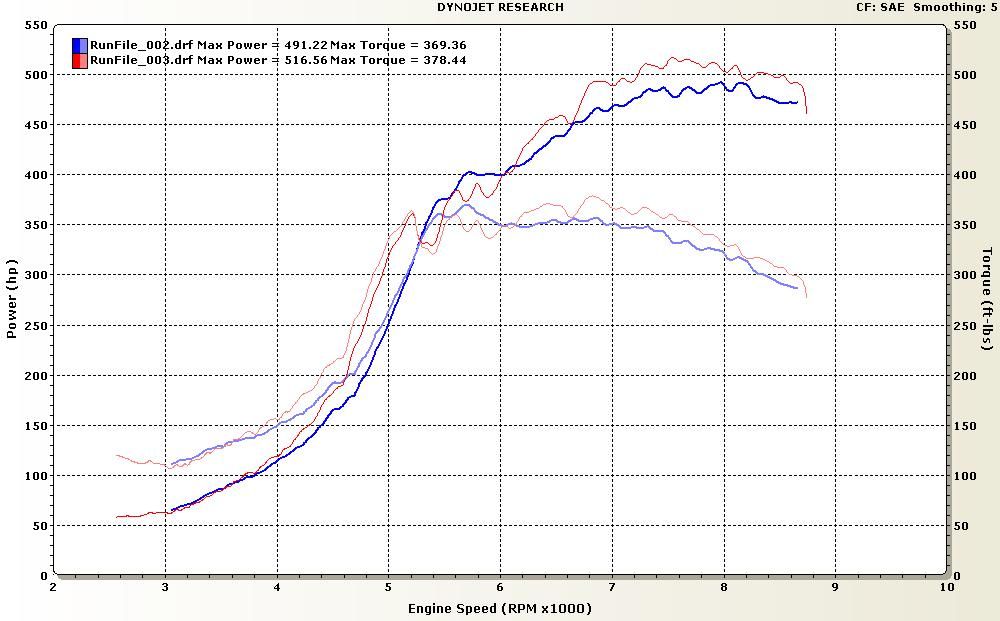 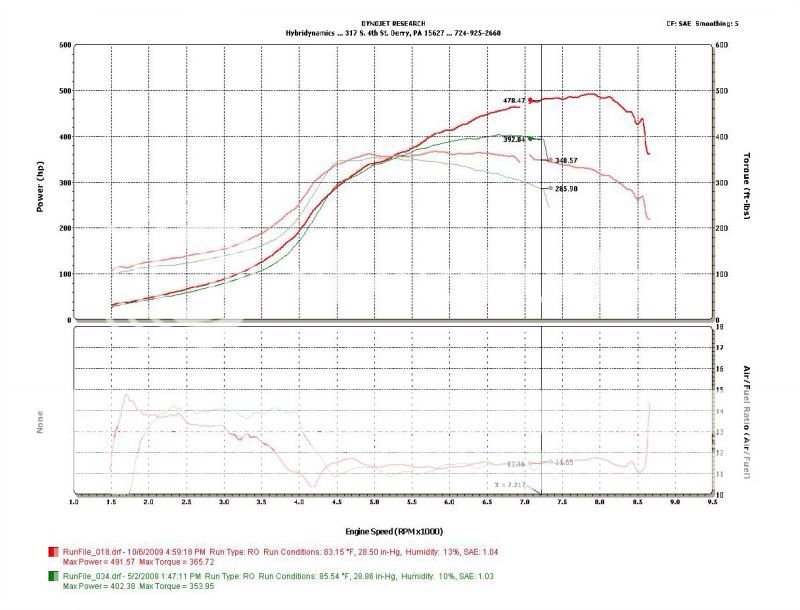
__________________
*My SR20VET* Does your VTC gear rattle in your S14/15 SR? PM me. |
|
|

|
|
|
#48 | |
|
Post Whore!
 |
Quote:
https://www.sr20-forum.com/forced-in...48#post!952948
__________________
*My SR20VET* Does your VTC gear rattle in your S14/15 SR? PM me. |
|
|
|

|
|
|
#49 | ||
|
Post Whore!
 Join Date: Jul 2005
Location: South Florida
Age: 42
Posts: 4,829
Trader Rating: (17)
           Feedback Score: 17 reviews
|
Quote:
Thank you, lets delve shall we first this graph was created at 11psi of boost, according to the owner 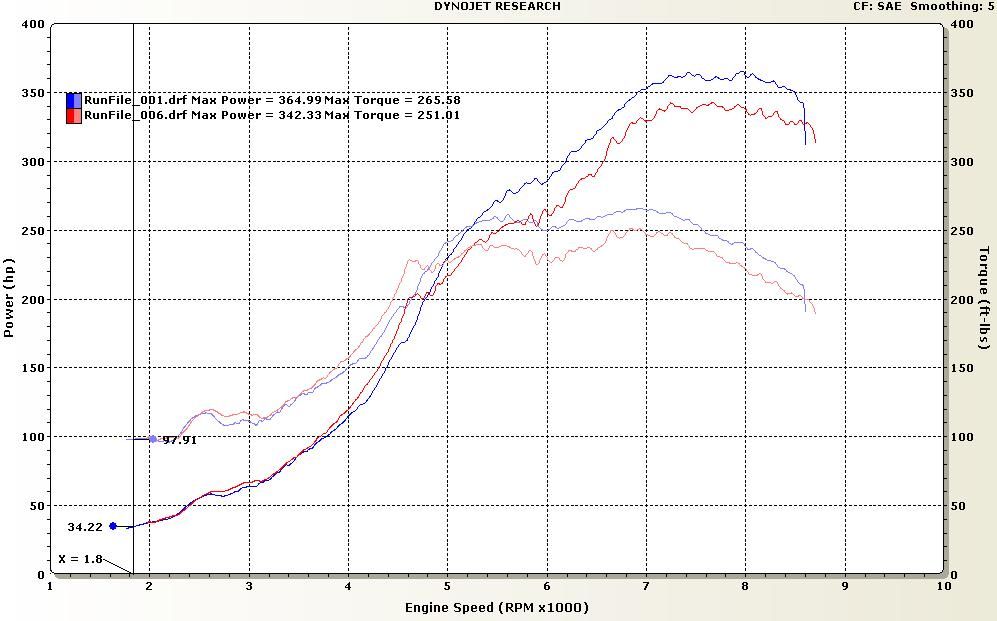 Lets see if it follows the 10ft*lbs per psi rule: take 260ft*lbs and remove 11*10 = 150ft*lbs at 0psi, this is what we expect from the 8.5:1 gasoline engine N/A platform with 0psi of boost. So far so good. Before moving on let us acquire a direct turbo comparison so we can effectively determine efficiency (since precision does not release compressor maps) Here is a random 2.2L Honda (very efficient engine?) with high compression (11:1) using 14psi of boost on that turbo https://www.s2ki.com/forums/s2000-fo.../#post24603727 WTQ: 315RWTQ is claimed Lets use two of them because idk what dyno the first one has https://www.s2ki.com/forums/s2000-fo.../#post24272158 Motor: F22c Compression Ratio: 11.0:1 Specs: Bone Stock Injectors & cc: Injector Dynamics 1000cc Fuel Pump: Walbro 450 EMS: Hondata Kpro V4 Fuel: 93 octane, no meth PSI: 15 PSI WHP: 521WHP WTQ: 360WTQ Dyno: Dynapack So same engine same compression but 45ft*lbs extra using dynapack dyno. both 93 octane so thats good. 2.2L engines, 6262 turbo. pull 10% from those due to the extra .2L of displacement and we should neglect compression for now, but remember it is higher we get 315 * .90 = 280ft*lbs for the first and 360 * .90 = 320ft*lbs for the second (dynapack dyno) In theory with 2L that is what they would have made at 15psi of boost w/ 11:1 compression Does that fit 10ft*lbs/1psi ? Lets see, 280 - 15psi = 280 - 150ft*lbs = 130ft*lbs rwtq 320 - 150 = 170ft*lbs rwtq In the first case, unknown dyno, I would say it looks a little low. The 2L should have given 150ft*lbs so I believe the engine is stuffed (not optimized for performance). Which the owner clearly says "stock engine parts" so this fits. Plus maybe it was a mustang dyno or something like that which reads lower than dynojet. The numbers don't need to be exact; they just need to fit our solution curve that all engines fit. next 170ft*lbs seems a bit high, but its on a dynapack which might read high by 20ft*lbs this time around. Or the dyno might read low and we are just seeing what 11:1 on boost can do. Either way, they both come very close to the rule of thumb of 1psi per 10ft*lbs of torque. We expect a bit more torque per psi on high compression engines. We do NOT expect more torque for any other reason. Either psi of boost, or compression ratio, those are the factors here. The VE cannot be improved above 100%; it can only go DOWN. That is why low numbers are 'fine' but high numbers are 'impossible'. Every engine must fit this rule of thumb. So now lets look at the 6262 turbo on 2L example with "19psi"  That exact same engine made 260tq with 11psi so if we extrapolate: 350 - 260 = 90 = 9psi required extra 11 + 9 = 22psi of boost required to reach 350, so lets say 23~psi of boost for 360ft*lbs Looking closer, we see that there is a power dip in the RED curve which correlates to this boost number: Quote:
Then for the rest of the run, it seems like the gauge is inaccurate, or the owner wasn't still paying attention, or the owner is making the assumption that it was 19psi, or the owner wasn't sure. Or something along those lines. My gauge is cheap and it does the same thing in the car, but the datalog shows differently, so we dont know the actual boost without some kind of log and a standard. Without the data to compare, we have no way of knowing. I do know one thing though, there is alot of mystery surrounding those numbers, and if what the owner says is true "24psi" is the ticket to making 350-360ft*lbs on a 2L engine, definitely fits our 10ft*lbs/psi rule, and definitely shows up on that graph. Another thing to consider is that the engine in that run used a JWT computer, which uses obnoxiously high timing values. That is why the graph is so spiky/wavy even with smoothing=5. Normally, a graph with proper timing will be smooth, especially with such a small engine and good tight, lightweight parts tuned well is smooth. but that graph is absolutely all over the place. It goes up, down, a LOT more than we can see, it is 'saved' by smoothing=ALOT. Well, those spikes cause erroneous torque and power readings. The dyno takes any 'peak' as it's peak number. This is an easy way to generate a falsely high number from any dyno by accident. So with the smoothing at 5, we still see crazy spikes, that is going to have an impact on the numbers throughout the run, because the engine was pushing harder sometimes and other times struggling for a moment, then pushing again hard, the cylinder pressure was all over the place. So this is not a good representation of torque output from an engine, we should not use this graph (or any dynojet at smoothing=5) for our analysis. However I understand the fundamental lack of sr20VE graphs (which is why I keep including random engines to make our "pool" of dyno graphs useful) so we are making do with whatever we can get. So kick that around for me and look back at what 2.2L does and play with the math a little bit to see for yourself. lets take the 2.2L at 15psi that made 320 @ 2.0L and try again with 11:1 compression (highest torque possible at 2L with 6262 turbo) here goes 320 @ 15psi + an extra 4psi = 320 + 40ft*lbs = 360ft*lbs of torque at 19psi with 11:1 compression at 2L See what I am getting at here, there is no very little evidence that a 2L engine with 8.5:1 compression made by nissan can produce 360 ft*lbs at 19 psi when it takes engines like a Honda with 11:1 compression and super light drivetrain to hit that region of torque. And even then it is so rare, most of them are 2.2 or 2.4L. I am all for fudge factors, but not convinced so far. Will need to see a few more dynojets of VE engines before I am convinced, thats all. Maybe the truth is out there. |
||
|
|

|
|
|
#50 |
|
Post Whore!
 Join Date: Jul 2005
Location: South Florida
Age: 42
Posts: 4,829
Trader Rating: (17)
           Feedback Score: 17 reviews
|
This is what the dynojet is telling me about 2L on gasoline
 Some boost controller sinusoidal activity is typical when the state-space type of boost controllers are improperly configured to respond fast enough. So it is very easy to see what is happening. The boost rockets to some value, the controller over compensates, and it falls off, then the controller re-compensates back to the original value, over shoots again slightly, overcompensates, back and forth a couple times until it settles out near the original starting value but without overshoot and over compensation. This is a very typical control system behavior. And since we know engine torque follows boost pressure when VE is a flat number, which is clear and easy to tell from the flat torque curve, we must conclude that whatever the initial boost pressure number is (24psi) is the same across the board, because torque is a flat line there which tells us the engine isn't losing efficiency until after 8,000rpm which is consistent with what we know about the SR20VE head. |
|
|

|
|
|
#51 |
|
Post Whore!
 |
There’s an overwhelming amount of dyno graphs out there that prove your formulations are flawed. I think this one is the icing on the cake... These motors respond well and perform when boosted. You can not deny this.
https://www.driftworks.com/forum/thr...670wnm.268847/ Edit* Here is the landspeed racer dyno. Gasp! 1.5l making 400ftlbs of torque... 
__________________
*My SR20VET* Does your VTC gear rattle in your S14/15 SR? PM me. Last edited by jr_ss; 06-13-2020 at 12:54 PM.. |
|
|

|
|
|
#52 | |
|
Post Whore!
 Join Date: Jul 2005
Location: South Florida
Age: 42
Posts: 4,829
Trader Rating: (17)
           Feedback Score: 17 reviews
|
Quote:
We only use dynojet because they cannot be fooled. I can hex edit or adjust the torque from any other dyno, such as that one, to read whatever I want. I could show you right now a 2L engine making 1000ft*lbs naturally aspirated. shocker So far my dynojet predictions match every single 2.0L on the internet that I have found. Not one flaw with my formula or reasoning. and so far the only thing you have shown me is 1 person who claims 24psi made 360ft*lbs of torque, which I also believe. Send more dynojets of SR20VE and I will knock em down one by one. Don't try to fool me with other dynos lol. What do you think I am... noobie city over here I want you to think about something very carefully. Energy comes from fuel, not boost. The boost just increases air density so you can inject more fuel. Therefore, a/f ratio has a dramatic impact on torque, as does inlet air temperature. If we hold those two variable constant, and assume ambient underhood air temp (100*F~) and typical gasoline ratio of "plenty of fuel" 11.5:1, what other factors remain? There is displacement, Volumetric efficiency, compression ratio, and air density which is a function of air temp (a constant we are holding) and pressure (the boost pressure we are given as a constant). Peak torque is typically achieved around 100% VE on all engines designed after 1982 as a constant 95 to 100% given, stock truck 2.4L KA24, stock truck 5.3L, stock 2JZ, stock SR20, all make near 95 to 100% VE so it is another constant we can ignore. Notice how engine flow rate or head flow rate, or anything to do with the head beyond VE (which is constant) has absolutely nothing to do with torque output. therefore it is impossible for anyone to take any 2L in the world, and get more torque from it given those constraints. It is thermodynamically, energetically, very unlikely without some novel technique (such as Direct Injection algorithms) to alter the BSFC and thermal efficiency of a power plant. This is the same way engineers use modelling to determine power plant consumption, heat loss, shaft power, etc... That is, by holding some variables constant and looking what happens to the other ones. In a more simple example, just use your imagination. Fill a cylinder to 100% capacity with the piston in opportune position and then fire the plug and measure the force generated by the piston's descent. if you do this over and over with a 0.5L (1/4 of a 2L) cylinder you will find that no matter how many times you do the same experiment, it will generate the same torque or push given all identical starting conditions. changing the "head" (cover over the cylinder) will not affect the torque unless it disturbs the compression ratio or efficiency of combustion. And even then the difference will be slight, and all heads made by Nissan after 1982 and all Heads made by Chevrolet made after 2002 contain the same cylinder head technology "fast burn" so there is little difference, nothing better has come along since for gasoline, and even if it does it will only be less than 1% superior. why is that? How can I say that? We know this because combustion has reached a pinnacle in our society. That is, thermodynamics has extracted all of the available energy (within 1% of what it attainable due to countless studies over the last 40 years by scientists and engineers on typical port injection engine platforms) regardless of who manufactures the engine because all engines in our modern time make use of similar computer modelling which puts the efficiency of every modern engine right near its calculable limit (the limit defined by calculus) of what is possible with gasoline. This why no matter whether we check 1995 or 2015 or 2020 the fuel efficiency on modern engines and cars has not gone up by much if anything it has gone down due to stricter emissions regulations! That is to say that, if they could squeeze more than 1% or 2% from any modern gasoline engine it would have shown up as an improved fuel economy model, yet new corvettes and new Toyota supras with all their modern combustion gadgetry still provide a measly 15mpg to 22mpg or whatever, the same in 1995 and 2015. They are at the limit of efficiency! |
|
|
|

|
|
|
#53 |
|
Post Whore!
 Join Date: Apr 2004
Location: Houston, TX
Posts: 2,701
Trader Rating: (16)
           Feedback Score: 16 reviews
|
sigh... Zilvia...
A given amount of torque for a given displacement and intake MAP only works if the engine VE is constant. An SR20VE head will have way higher VE than a DET head. I personally saw ~10-14% higher on my old S13 in boost with the exact same turbo manifold, turbo, exhaust, intercooler setup. Only change was the VE. The VE needed more injector duty cycle at the same boost on the high cams everywhere to get the same AFR. So if the boost is the same, the displacement is the same, but it needs 10-12% more fuel at the same RPM... what's happening to the torque? That's right, it went up. I think you'd be surprised looking at old engines with really poor volumetric efficiencies and how much torque they generated per liter of displacement. You're likely just used to looking at late 80's, early 90's engines designs with all similar peak VEs (SR20DET, 4G63, 3S-GTE etc.).
__________________
S13 Hatch - Goes around tracks quickly DEFSPORT |
|
|

|
|
|
#54 | |
|
Post Whore!
 |
Quote:
__________________
*My SR20VET* Does your VTC gear rattle in your S14/15 SR? PM me. |
|
|
|

|
|
|
#55 | |
|
Post Whore!
 Join Date: Jul 2005
Location: South Florida
Age: 42
Posts: 4,829
Trader Rating: (17)
           Feedback Score: 17 reviews
|
Quote:
Your BS cannot confuse me. Your post contains no useful information or proof of anything. Show some data, show some graphs. Here is an entire thread of dynojet data for SR20VE engines: https://www.sr20forum.com/threads/th...o-post.184824/ ALL Of the dyno jets follow the trend of 150ft*lbs max for sr20VE Naturally aspirated. They ALL follow the same rule of 1psi per 10ft*lbs of torque. 14.5psi of atmospheric pressure @ 100% VE = 145ft*lbs of rwtq on a dynojet. This rule is for all 2L engines. No matter what is done to them, it is the same maximum limit. I've examined around fifteen or twenty dynojet curves in this thread alone and all of them follow the same rule. There has not been a single any significant difference between any of the engines from any manufacturers. Sr20VE and sr20det and 2jzgte and LM7 and LQ4 and L33 and (name any engine made after 1982) can achieve 95 to 100% VE with very simple mods, and many do it stock, some even trap higher VE with the OEM camshaft due to high inlet port velocity at low rpm with small diameter intake ports helping supercharge the cylinder. This is therefore a given and assumption for all engines, stock LM7/SR20VE/SR20DE/2JZGTE can do 95% to 105% VE easily, installing a long duration aftermarket cam actually can hurt their VE and drop torque and cylinder pressure. |
|
|
|

|
|
|
#56 |
|
Post Whore!
 Join Date: Jul 2005
Location: South Florida
Age: 42
Posts: 4,829
Trader Rating: (17)
           Feedback Score: 17 reviews
|
Dynojet data for sr20ve vs sr20de engines:
SR20VE with a stock cam, near 90% or 100% VE easily due to excellent design  SR20VE with what I assume is some kind of "cam upgrade" making nearly the same exact VE and thus torque:  The Volumetric efficiency(VE) did not improve much, and as expected with a 'cam upgrade' the cylinder pressure is lower in some early rpm area because Volumetric Eff suffers in the low RPM ranges due to the effect of a larger cam on almost all engines. Next, SR20DE engines fully modded out to show near 100%Volumetric Efficiency for comparison:   Conclusion: All 2.0L engines whether sr20de or sr20ve produce similar peak Volumetric efficiency, and we can tell this by comparing their peak torques with each other. The DE engine is not inferior to the VE Engine in terms of cylinder pressure, torque capability, or Volumetric efficiency (also called VE). Despite an overwhelming number of variables which interplay with dynojet (humidity, temp, altitude, engine wear, age, etc...) ALL 2.0L engine display similar Volumetric efficiency and Torque capability regardless of manufacturer or model. |
|
|

|
|
|
#57 |
|
Post Whore!
 |
I stopped listening or caring when king constantly made all these assumptions (engine must be old, wrong dyno, etc. regardless of what the actual poster of the results state) to FORCE his narrative
Lol. Why do you guys keep resounding? All 2 liter engines produce the same VE is a whole bunch of bullshit when we are talking turbos and the heads ability to "efficiently" fill cylinders (read k series, VE or B series heads) King has never dealt with a head or turbo that is able to fill engines way above 100% VE......lol. Yeah next.... |
|
|

|
|
|
#58 |
|
Post Whore!
 |
It funny, jr I had a written up a post and mentioned the LSR car. The browser stopped responding and I didn't bother to waste my time
King, that is NOT flywheel HP. https://5523motorsports.com/road-wor...s-unstoppable/ Here is a pic of Nick and JWT on the (chassis) dyno.........   |
|
|

|
|
|
#59 |
|
Post Whore!
 |
Also, not all engines are able to fill to same VE at the same RPM. Also, pressure is essentially forcing more air mass into the same volume. PV = NRT. As Pressure increases, SO does Temp for the SAME volume.......
The VE head has the ability to flow MORE MASS of air vs a DE or DET head, hence it is able to get closer to 100% VE without a turbo. Add a turbo, and the above (albeit very simplified) equation comes into effect.... |
|
|

|
|
|
#60 | ||
|
Post Whore!
 |
Quote:
All his math formulas and knowledge yet he still isn’t open to expand his mind and think outside of them. That perhaps, something has changed and has allowed the increase of torque vs dismissing it and calling it bullshit. . Quote:
He also talks about researching but goes on to regurgitate his rhetorical nonsense instead of researching himself... Anyway, King these are legitimate power levels and real world data. As I said before, take it or leave it. At this point, I realize you cannot think outside of the box. It’s always going to be black and white for you.
__________________
*My SR20VET* Does your VTC gear rattle in your S14/15 SR? PM me. |
||
|
|

|
 |
| Bookmarks |
|
|